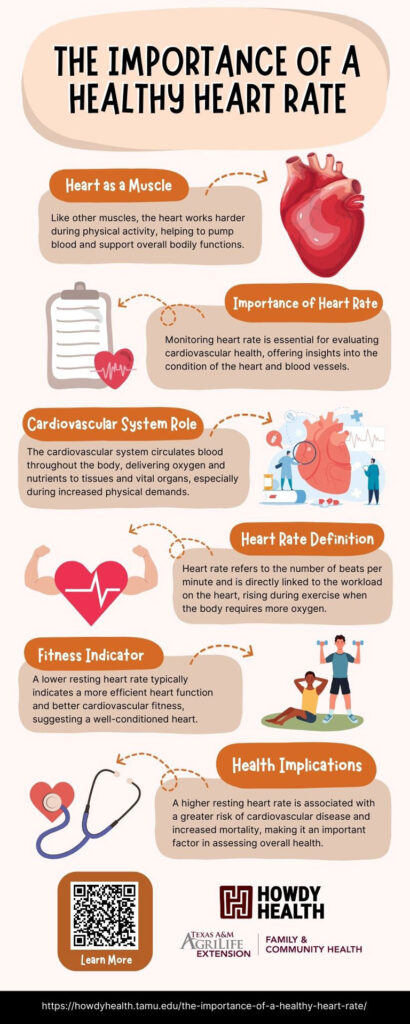As we work any of our bodily muscles, our heart muscle also works.
Heart rate is an important factor that is often used to determine an individual’s health, especially cardiovascular health1 – that is, the health of the heart and blood vessels. The cardiovascular system circulates blood throughout the body to supply it with oxygen and nutrients.1,2 When your heart beats, blood is pumped out of your heart and into your body to supply oxygen (and nutrients) to working muscles or to your lungs for re-oxygenation.1
The term heart rate refers to the number of times your heart beats per minute, and it’s directly related to the workload being placed on your heart.1 Your heart rate is lower when you are at rest and increases when you exercise because more oxygen-rich blood is needed by your body when you exercise.3
For this reason, keeping track of your heart rate can help you assess your level of fitness. A lower resting heart rate generally implies more efficient heart function and better cardiovascular fitness,3 while a higher resting heart rate is linked with a greater incidence of cardiovascular disease and all-cause mortality.4
Infographic
Download the PDF or share the image below to help others learn more about the importance of a healthy heart rate.
- University of California, Davis (n.d.). Heart rate. Retrieved from https://health.ucdavis.edu/sportsmedicine/resources/heart_rate_description.html.
- Texas Heart Institute. Anatomy of the heart and cardiovascular system (n.d.). Retrieved from https://www.texasheart.org/heart-health/heart-information-center/topics/anatomy-of-the-heart-and-cardiovascular-system/.
- Laskowski, E.R. (2018, August 29). What’s a normal resting heart rate. Retrieved from https://www.mayoclinic.org/healthy-lifestyle/fitness/expert-answers/heart-rate/faq-20057979.
- Saxena, A., Minton, D., Lee, D., Sui, X., Fayad, R., Lavie, C.J., & Blair, S.N. (2013). Protective role of resting heart rate on all-cause and cardiovascular disease mortality. Mayo Clinic Proceedings, 88(12), 1420-1426. https://doi.org/10.1016/j.mayocp.2013.09.011.






